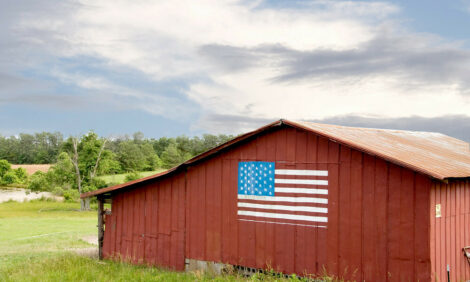



Great progress in reaching farm antibiotic goals but more yet to be achieved says RUMA
Two years after industry-led targets for antibiotic use were identified for all main farm livestock species in the UK, a second annual review of progress has been released, including details of where targets have been achieved early and where challenges remain.The ‘Two Year On’ report, released by RUMA’s Targets Task Force to coincide with the RUMA conference (29 October), shows progress towards goals for data collection, use of antibiotics, and uptake of preventative measures such as vaccines and training.
The report follows up on the work of the task force in 2017 in which a leading farmer and veterinary surgeon from each sector identified different starting points and potential for reductions in antibiotic use in each species by 2020, then worked with their respective sectors to gain support for the plans.
RUMA’s chairman Gwyn Jones says the review not only provides transparency and accountability, but collects information on progress into one place and explains what is underpinning the bigger picture.
“This report shows the granularity behind the very welcome reductions in antibiotics sales announced by the Veterinary Medicines Directorate at our conference,” he says.
“Overall we have a positive story, with antibiotic sales having more than halved in five years, but each livestock sector is in a very different place. Even within a sector, there can be a wide range of results with some very progressive producers, and others yet to engage.”

He says that the poultry meat and laying hen sectors have maintained low antibiotic use and are below target. The gamebird sector has achieved its planned halving of antibiotic use early, but is looking at further cuts. Trout and salmon are near or below target, and with a 60 percent fall in antibiotic use over three years, the pig sector is on track to meet ambitious reductions by 2020.
“However, disease is proving a major challenge, some of which is being exacerbated by climate change. There is also awareness of how much tougher it will get each year to deliver the changes needed; next steps could require investment or some brave decision-making for some.
“Lack of data for the cattle and sheep sectors also continues to be a problem but we are seeing some very successful initiatives now making a difference, and concerted progress has been made towards resolving the data challenge.”
Mr Jones reiterated the importance of not compromising animal health and welfare or food safety while adjustments were being made.
“The approach has to be sustainable with an end-goal of optimal – not zero – use. Antibiotics play an important role in preventing pain and suffering in our farm livestock as well as ensuring food safety. This is why it’s important to judge progress against the whole range of qualitative and quantitative measures in the review.”










